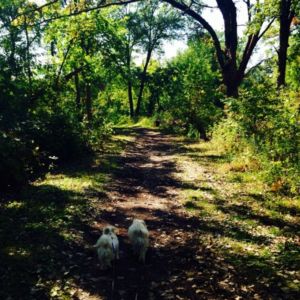Minnetonka residents fight City Hall over bike trail
 Twin Cities drivers are finally waking up to the reality there’s virtually no stopping urban planners intent on converting miles and miles of roadways to bike lanes, regardless of congestion and other consequences.
Twin Cities drivers are finally waking up to the reality there’s virtually no stopping urban planners intent on converting miles and miles of roadways to bike lanes, regardless of congestion and other consequences.
But now some residents say Minnetonka city officials and biking special interest groups want to go off-road as well, converting a quiet neighborhood park into a magnet for mountain bikers in the suburb.
On its website, city planners insist no decision will be made about the proposed mountain bike trail in Big Willow Park until after another public meeting on January 8.
City staff has heard from many residents regarding the potential creation of mountain biking trails. Several steps must still occur before a formal proposal is considered.
Yet a Minnetonka taxpayer who contacted American Experiment maintains the process is for all practical purposes stacked against citizens. A “feasibility study” prepared by Trail Source LLC lays out the options, including the $130,000 cost of constructing the trail. Well-organized, special interest biking groups have essentially drowned out their voices at City Hall, according to this resident.
There is a great deal of high power behind the effort to get mountain biking in Big Willow Park, located in Minnetonka, by biking groups that includes the Minnetonka Mountain Bike Trail Advocates (Tonka MBT Trail Advocates), Minnetonka High School Cycling League, National Interscholastic Cycling Assn (NICA) and the Minnesota Off-Road Cyclists (MORC).
These groups have overpowered the community voice on the matter. Further, much of the work and decision making by the City of Minnetonka had been completed before anyone in the community became aware of the project proposal.
Why should anyone outside Minnetonka be concerned? Because someday soon bicycling “enthusiasts” could take aim at a park on your street.
It is clear from the rhetoric from the advocates of Mountain Biking that they want trails within a bike ride distance of as many riders as possible, and placed in many parks that have undergone habitat restoration. These trails will be disruptive to the natural habitat and are proposed to be placed in environmentally sensitive areas. Additionally, there will be infrastructure expenses which will be incurred to support Mountain Biking including parking for cars and buses, bike lanes between trails, bridges or tunnels to cross roads and railroads, etc.
Nearly 250 comments and complaints have been logged at the city’s community discussion board. But to what end?
The bottom line is that Big Willow Park is yet another potential victim of the effort of the biking community to have the community at large pay in both dollars and inconvenience for the wishes of a select few. This is only the first of a long line of public parks to fall to the exclusive use of bikers. One of the goals of this group is for all mountain bikers be able to conveniently ride to a mountain biking course.